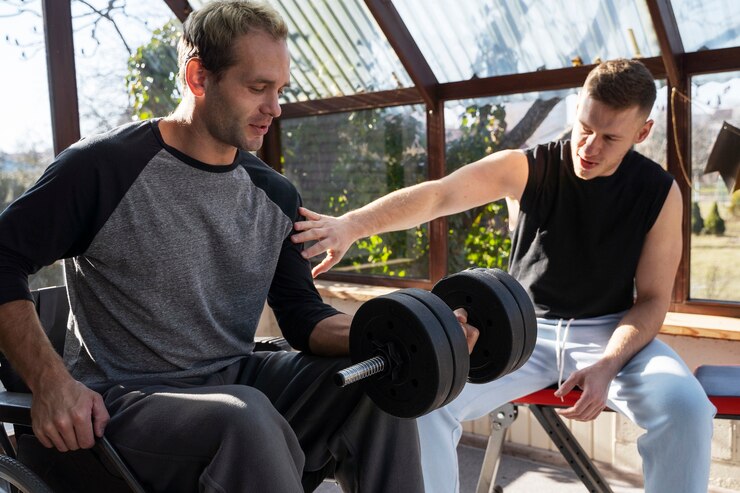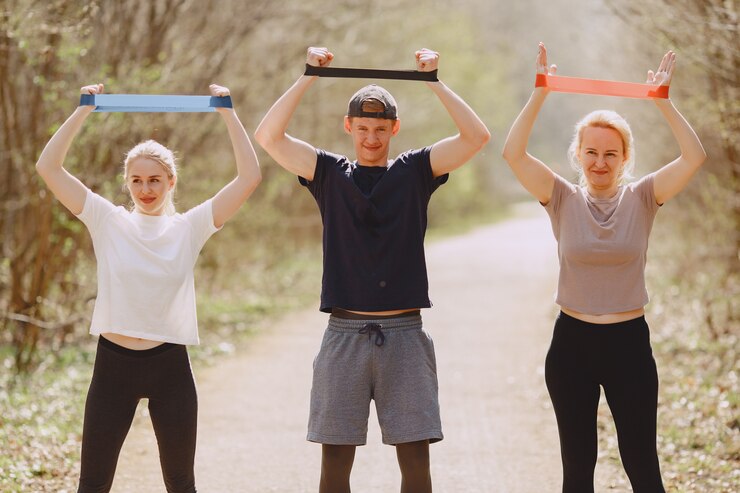In today’s fast-paced world, fostering meaningful connections is more critical than ever. With social isolation, loneliness, and mental health concerns rising, exercise has emerged as an excellent way to bridge gaps, strengthen relationships, and promote overall wellness. By engaging in physical activities that combine social interaction and inclusivity, we can build healthier, more connected communities. This article delves into how exercise can enhance social wellbeing while improving physical and mental health.
The Social and Physical Benefits of Exercise
Exercise is often associated with physical health benefits, such as improving cardiovascular health, lowering blood glucose levels, and enhancing insulin sensitivity. However, its impact extends far beyond these physical advantages. Engaging in physical activities has been proven to:
- Boost mental wellbeing by releasing mood-enhancing hormones like endorphins and endocannabinoids.
- Combat loneliness by fostering social interaction and creating opportunities to form meaningful relationships.
- Promote confidence and self-esteem, making individuals more comfortable engaging in social settings.
Breaking Down Barriers Through Inclusivity
Exercise is a universal activity that transcends age, gender, and cultural barriers, promoting inclusivity and diversity. Participating in group exercise classes, sports teams, or community sessions creates a shared environment where people can connect and collaborate. Inclusivity in physical activity also helps:
- Build a sense of belonging in diverse groups.
- Encourage cooperation and teamwork.
- Strengthen bonds among individuals from different backgrounds.
Activities That Foster Connection
Several physical activities are particularly effective in nurturing connections and building relationships. Here are some examples:
- Group Exercise Classes: From yoga and Pilates to Zumba and spinning classes, group settings allow individuals to share experiences and motivate one another.
- Team Sports: Joining a sports team fosters collaboration, trust, and communication. Whether it’s soccer, basketball, or volleyball, team sports require players to work together towards a shared goal.
- Community Walks and Bike Rides: Walking or cycling with friends, family, or community members is a low-pressure way to engage in physical activity while enjoying meaningful conversations.
- Family Outings: Engaging in physical activities with loved ones, such as hiking, swimming, or playing sports, strengthens family bonds while creating cherished memories.
- Wellness Centres and Hubs: These spaces offer inclusive environments where individuals can participate in a variety of fitness programs and workshops.
Motivation and Accountability
One of the key benefits of exercising with others is the built-in motivation and accountability it provides. A supportive exercise partner or group can:
- Encourage you to push beyond your limits.
- Help you stay consistent with your fitness routine.
- Celebrate milestones and achievements together.
For example, participating in group fitness challenges or fundraising events, such as fun runs, can inspire individuals to stay committed to their fitness goals while contributing to a greater cause.
Strengthening Relationships Through Exercise

Exercise offers an excellent opportunity to deepen existing relationships and create new ones. Whether it’s bonding with a partner, spending quality time with family, or building friendships within a community, physical activity promotes connection in the following ways:
- Shared Experiences: Engaging in novel and enjoyable activities together strengthens emotional connections.
- Improved Communication: Activities like team sports encourage open dialogue and effective communication.
- Conflict Resolution: Physical activities can serve as an outlet for stress, fostering healthier interactions.
Mental Wellbeing and Social Interaction
Exercise is a powerful tool for combating social isolation and mental health challenges. The release of hormones such as endorphins and adrenaline during physical activity can elevate mood, reduce anxiety, and enhance social engagement. Additionally, exercising with others provides:
- A supportive environment to share struggles and triumphs.
- Opportunities to build empathy and understanding.
- A sense of community that combats feelings of loneliness.
Nurturing Inclusivity in Exercise Environments
To build connections through exercise, it’s essential to create inclusive and welcoming spaces. Here are some strategies:
- Emphasize Diversity: Offer programs that cater to different fitness levels, age groups, and cultural backgrounds.
- Foster Safe Environments: Ensure that individuals feel comfortable participating without fear of judgment or comparison.
- Encourage Participation: Organize accessible activities like free community yoga classes or outdoor group workouts.
Creating Memories Through Play and Movement
Physical activity is inherently playful, whether it’s running, dancing, or climbing. This element of fun creates lasting memories and reinforces positive associations with exercise. Activities such as dancing in synchronicity or playing team sports amplify bonding through shared laughter and joy.
Overcoming Barriers to Connection
Despite the benefits, some individuals face barriers to engaging in social exercise, such as:
- Lack of confidence or self-esteem.
- Social anxiety or fear of judgment.
- Accessibility issues or financial constraints.
To address these challenges, communities and organizations can:
- Provide affordable or free exercise programs.
- Offer mentorship opportunities to support newcomers.
- Promote body-positive and inclusive messaging.
The Role of Organizations in Building Active Communities
Organizations like Life Leisure play a crucial role in promoting social wellbeing through physical activity. By creating hubs that bring people together, these organizations can:
- Encourage healthier lifestyles.
- Foster active and connected communities.
- Provide resources and support for individuals at all fitness levels.
Key Takeaways for Building Connections Through Exercise
- Start Small: Begin with activities that feel comfortable, such as walking or light jogging with a friend.
- Explore Opportunities: Join a local gym, wellness center, or community group to find like-minded individuals.
- Focus on Fun: Choose activities that bring joy and align with your interests.
- Be Inclusive: Welcome others into your exercise routines, regardless of their fitness level.
- Stay Consistent: Building connections takes time and effort, but the rewards are well worth it.
By integrating exercise into our lives, we can break down barriers, combat loneliness, and build lasting connections. Physical activity is not just about improving our health; it’s a powerful tool for fostering relationships, creating memories, and nurturing a sense of community.
Whether it’s through team sports, group classes, or simple family outings, exercise offers endless opportunities to connect, grow, and thrive together. So lace up your sneakers, grab a friend, and start your journey toward building a healthier, more connected life.
